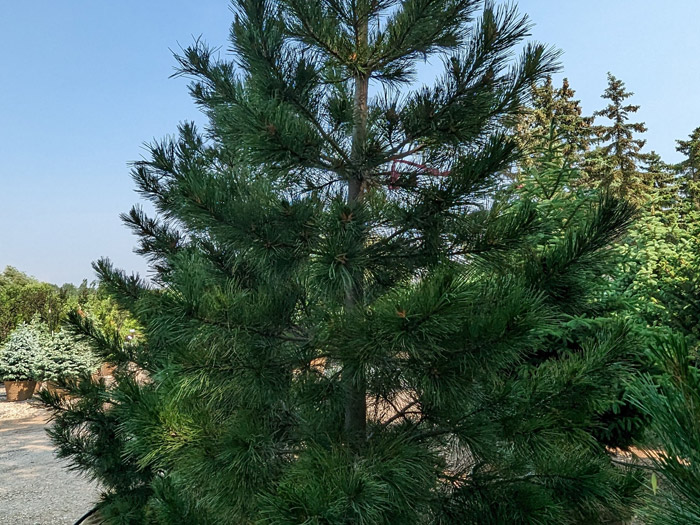Swiss Stone Pine seems to be an uncommon tree in every aspect. We rarely see it in our landscape here in Manitoba, but even in its native environment it has a small range where it can be found. It is largely limited to the Alps but can also be found scattered throughout southern Europe and some portions for Asia. It is known by a few names including Swiss Pine, Austrian Pine, and Stone Pine.
All these names emphasize the small range it calls home. However, growing in the mountains does have its advantages. Swiss Stone Pine is known to grow in a wide range of soils including heavy clay. A useful feature for us in the Red River valley. It still has its limits and in areas with high pH it can become pale and stunted (like nearly anything we try to grow in high pH!).
The challenge of clay is always moisture retention so make sure to keep the Pine in a higher well drained area. It also has an impressive cold tolerant rating zone 2 and rarely showing winter burn. Burlap fencing is still recommended for the young years as a precaution.
Other than being resilient the Swiss Stone Pine has many other features that make it desirable for the yard. They are seen around 20′ tall and 10′ wide with impressive compact form.
Swiss Stone Pine is known for being one of the most compact and full Pine trees for Manitoba. Its needles can be up to 5″ long and keep a rich green to blue colour year-round. It is one of the better options for a small “Christmas tree” for the yard.
Perhaps the most interesting and underrated fact about Swiss Stone Pine is that it produces edible pine nuts. There are many sources but the Swiss Stone Pine the main source for European Pine nuts. They are edible, nutritious and of surprisingly high value. Pine nuts can sell for as high as $117 per Kg/$260 per pound! I can say form experience that they go well in a salad once they have been sauteed – not that I can afford them these days.
The tree begins producing cones and nuts around 5-8 years old. Unfortunately, as I mentioned earlier, they are an uncommon tree. We often only carry a dozen trees per year or less. Not many people are aware of its potential and the market just does not have that many available. But I suspect I could still find room for one in my yard… maybe.




